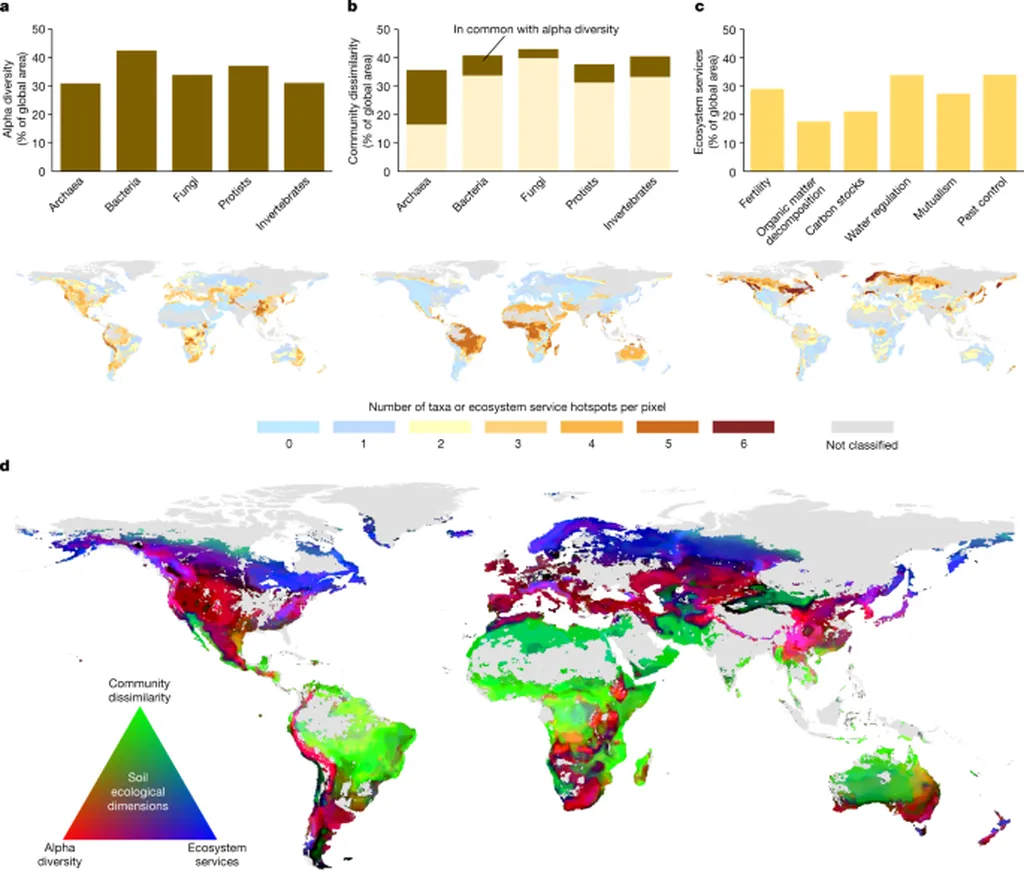In the heart of Switzerland, at the Institute of Integrative Biology within ETH Zurich, a team of researchers led by Laura G. van Galen has been working on a project that could significantly impact our understanding of soil microbial communities and, consequently, the energy sector. Their work, published in the journal *Scientific Data* (translated to English as *Scientific Data*), has culminated in a global database of soil microbial phospholipid fatty acids (PLFAs) and enzyme activities, a resource that promises to open new avenues for research and commercial applications.
Soil microbes are the unseen architects of our ecosystems, driving critical functions that influence how ecosystems respond to global change. However, until now, research has largely been confined to local and regional scales, limiting the broader applicability of the data. Van Galen and her team have sought to change that by collating a comprehensive global database. This database includes data from 12,258 georeferenced samples collected across all continents, with 5.1% of the data being previously unpublished. It encompasses measurements of 113 PLFAs and 26 enzyme activities, along with metadata such as sampling date, sample depth, and soil pH, total carbon, and total nitrogen.
“The availability of this data is a game-changer,” says van Galen. “It allows researchers to conduct both global- and local-scale studies, providing a more holistic understanding of soil microbial biomass and function.”
For the energy sector, the implications are substantial. Soil microbes play a crucial role in carbon cycling, which is directly relevant to efforts aimed at mitigating climate change. Understanding microbial activity can help in developing more effective strategies for carbon sequestration, a critical component in the fight against global warming. Additionally, the data could inform the development of bioenergy crops that are more resilient and productive, thereby enhancing the sustainability of bioenergy production.
Moreover, the database can facilitate the discovery of new enzymes with industrial applications. Enzymes derived from soil microbes are already used in various industries, including biofuel production, where they help break down complex carbohydrates into simpler sugars that can be fermented into biofuels. The expanded dataset could lead to the identification of novel enzymes with improved efficiency and specificity, driving innovation in the bioenergy sector.
“The potential for this database is vast,” van Galen explains. “It’s not just about understanding the natural world; it’s about leveraging that understanding to drive technological and industrial advancements.”
As researchers delve into this rich dataset, they are likely to uncover new insights into soil microbial communities and their functions. This could lead to the development of more sustainable agricultural practices, improved bioenergy crops, and innovative industrial processes. The database represents a significant step forward in our quest to harness the power of soil microbes for the benefit of society and the environment.
In the words of van Galen, “This is just the beginning. The data is out there, and the possibilities are endless.” As the scientific community continues to explore this resource, we can expect to see a wave of innovations that will shape the future of the energy sector and beyond.

